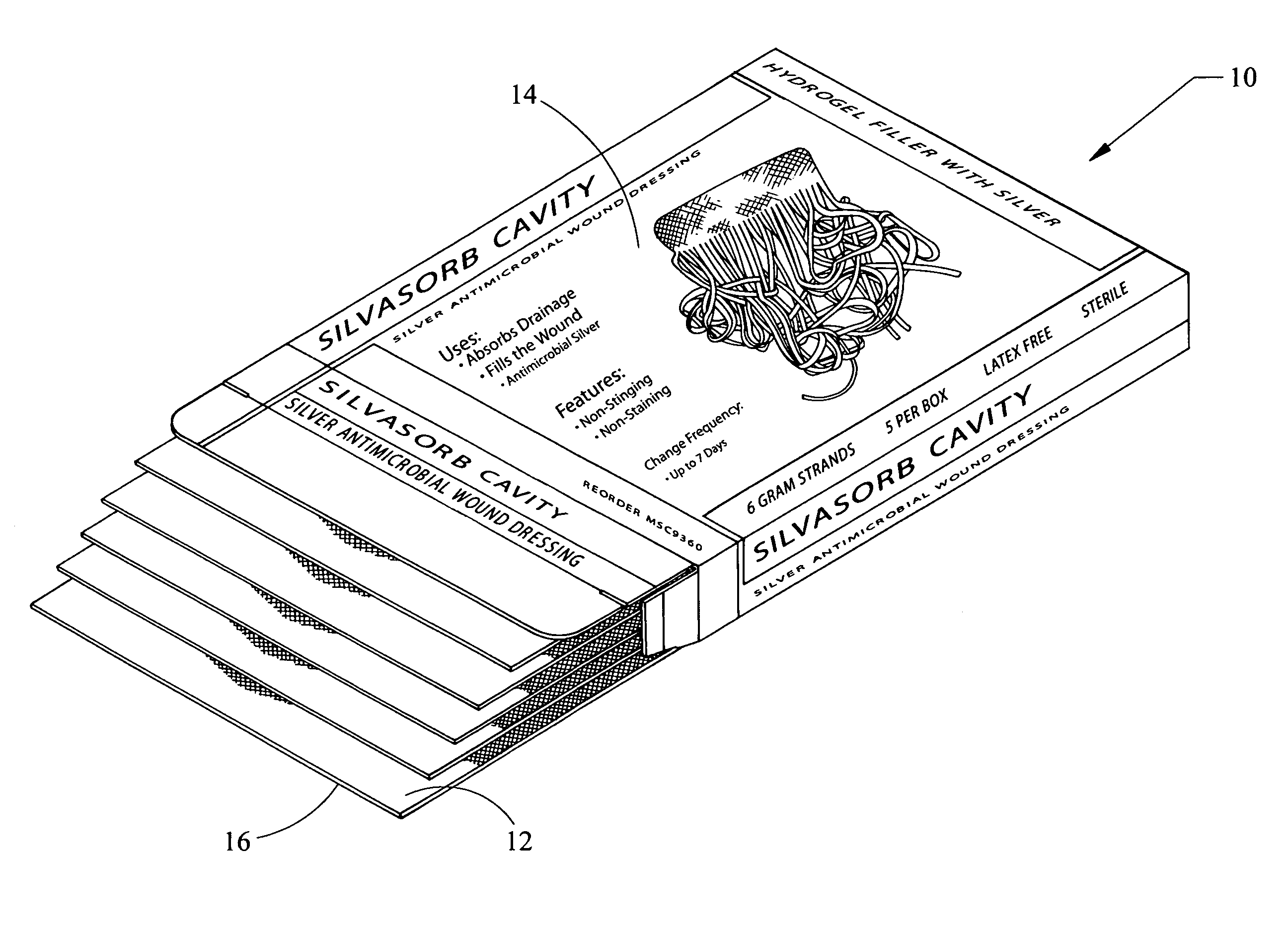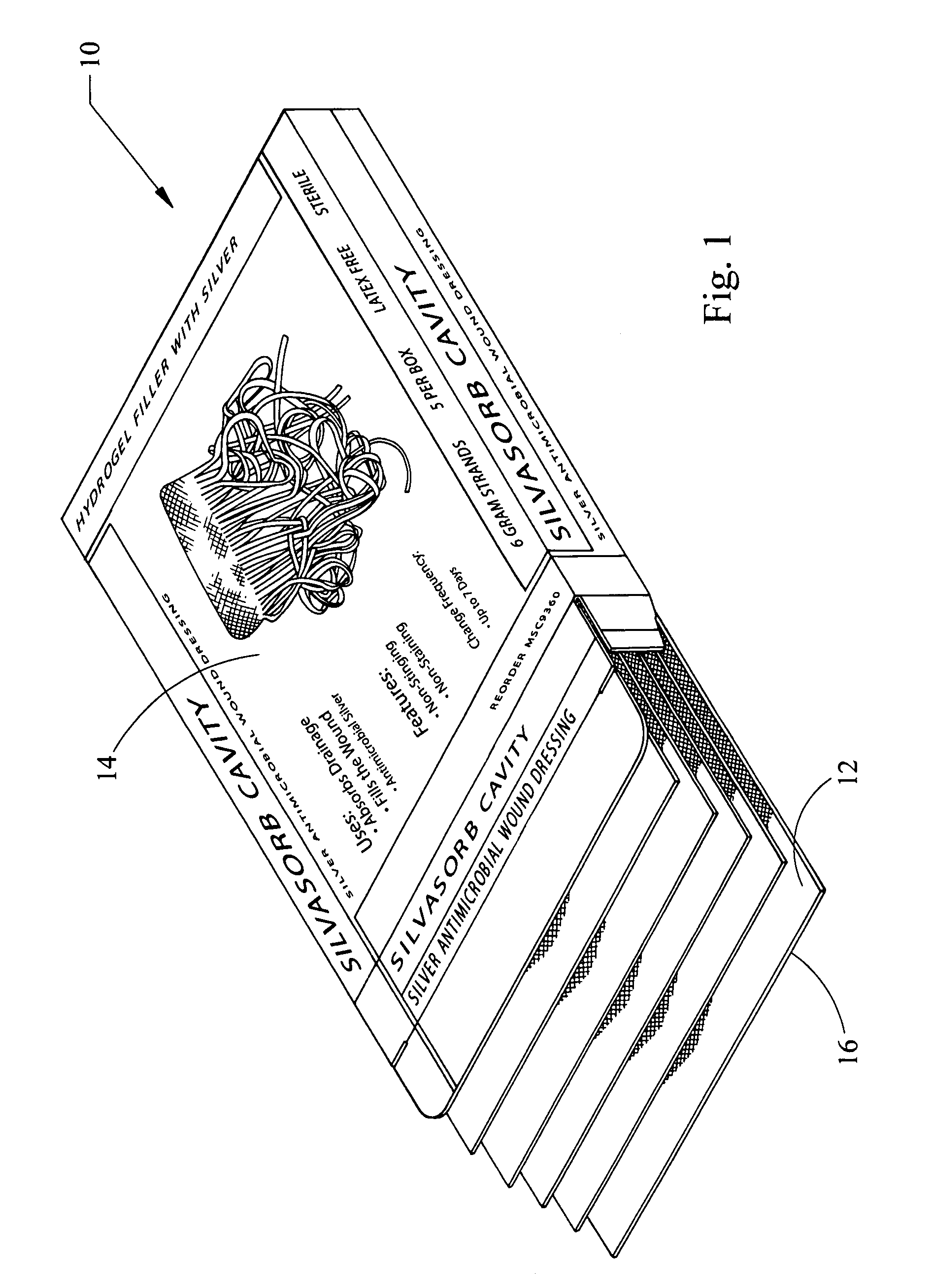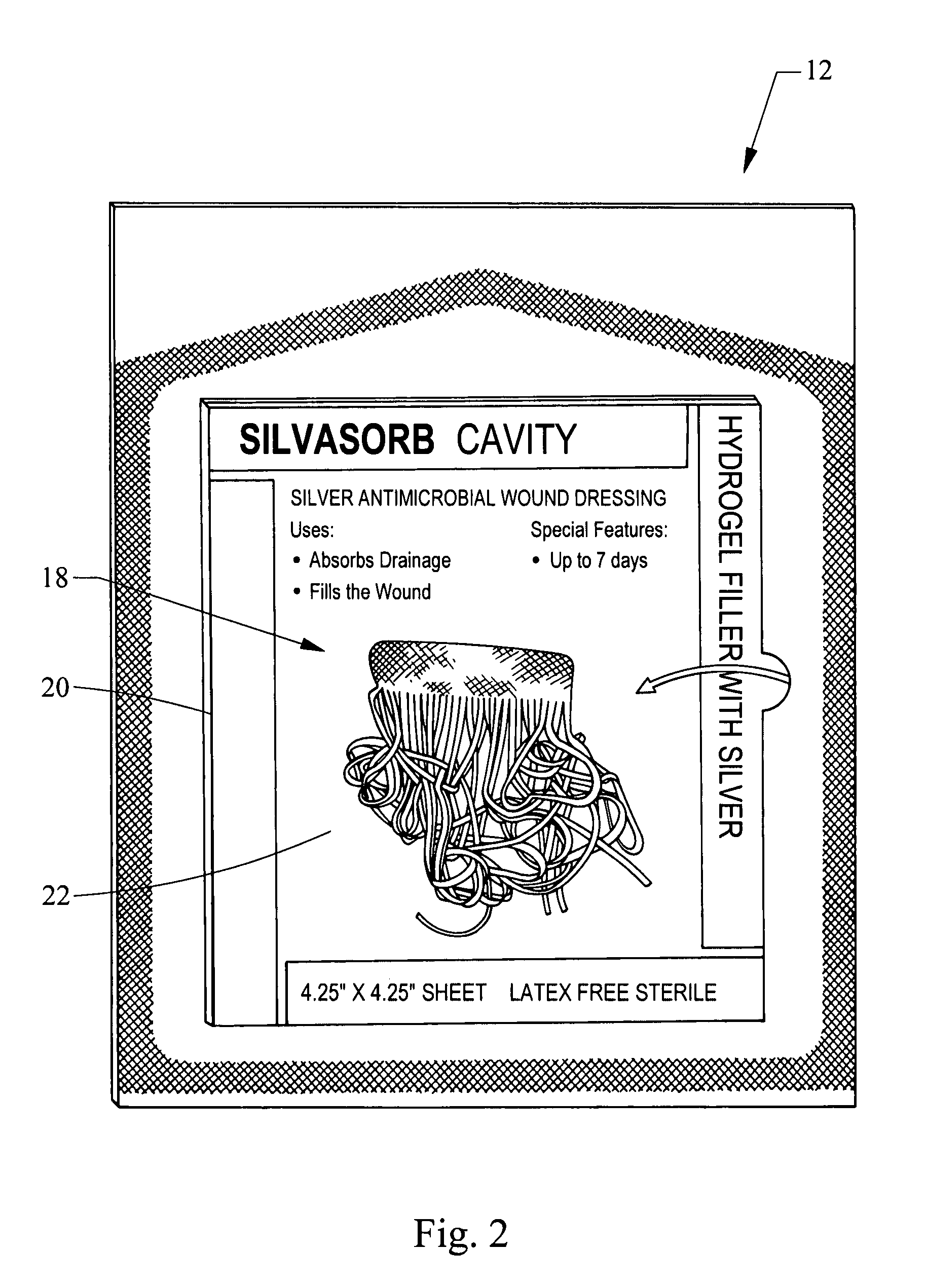Package for wound care products
a wound care and product technology, applied in the field of wound care products, can solve the problems of chronic wounds that may take years to heal or may never heal, and the treating person lacks any knowledge of how to open the wound care produ
- Summary
- Abstract
- Description
- Claims
- Application Information
AI Technical Summary
Benefits of technology
Problems solved by technology
Method used
Image
Examples
Embodiment Construction
[0023]Referring to FIG. 1, a plurality of wound care products are packaged together in a single package for treatment of severe wounds. Each wound care product is a single-use wound care item that is inserted into a corresponding individual package. For example, one type of wound care products for treatment of severe wounds is a wound dressing. According to one implementation, a package for one or more wound dressings includes a container in the shape of a box 10 and five wound dressings individually packaged in respective pouches 12. In alternative implementations, the container can be any type, size, or shape (e.g., a circular box, a rectangular bag, etc.), can be any material, and can include any number of wound dressing packages. In other alternative implementations, the wound dressing packages can be any type, size, or shape, and can be any material. For example, instead of or in addition to pouches, the individual packages can be individual boxes, individual bags, individual e...
PUM
| Property | Measurement | Unit |
|---|---|---|
| area | aaaaa | aaaaa |
| size | aaaaa | aaaaa |
| time | aaaaa | aaaaa |
Abstract
Description
Claims
Application Information
 Login to View More
Login to View More - R&D
- Intellectual Property
- Life Sciences
- Materials
- Tech Scout
- Unparalleled Data Quality
- Higher Quality Content
- 60% Fewer Hallucinations
Browse by: Latest US Patents, China's latest patents, Technical Efficacy Thesaurus, Application Domain, Technology Topic, Popular Technical Reports.
© 2025 PatSnap. All rights reserved.Legal|Privacy policy|Modern Slavery Act Transparency Statement|Sitemap|About US| Contact US: help@patsnap.com



